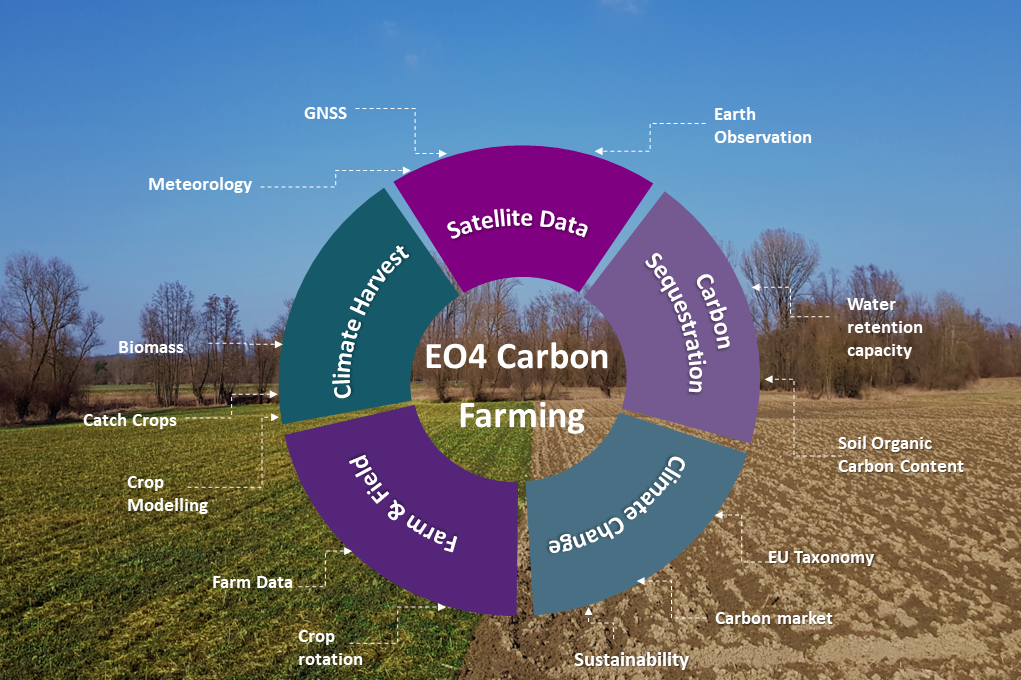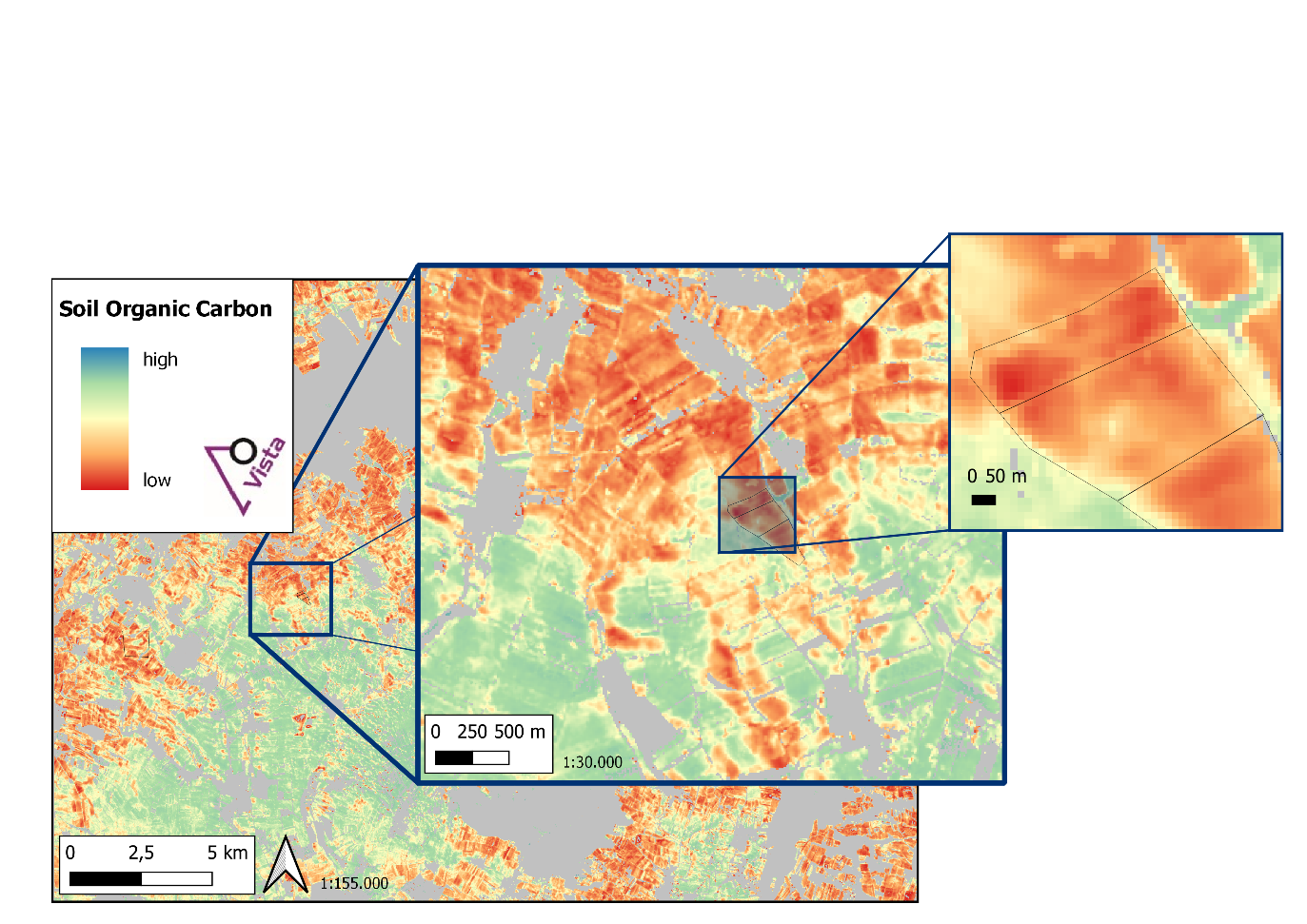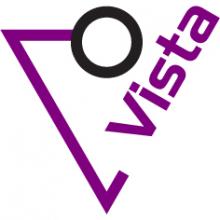Objectives of the service

The objective of the planned offering is to provide a commercial service for monitoring, reporting and verification of Carbon Farming.
Carbon Farming means all activities agriculture can undertake for sustainable reduction and sequestration of CO2 from the atmosphere. One challenge in Carbon Farming is to independently assess and verify the actions taken as well as their impact on carbon sequestration.
The EO4CarbonFarming MRV Tool includes functionalities to monitor the carbon in plant and soil, to report on required measures like crop rotation and catch crop planting, and to verify them. Additionally, their impact can be evaluated. This enables performance assessment of sustainability measures and more resilient farming practices. Reliable determination of field carbon stocks is key to monitoring the climate impacts of carbon farming and to developing business models.
Users and their needs
There are two main customer groups. Customers with performance-based remuneration for sustainability services, such as carbon certifiers, governmental agencies, NGOs and the agri and food industry, but also agricultural service companies.
Both groups have in common that they need reliable and cost-efficient reporting and verification for the sustainability measures that have been performed by the farmer. The first group additionally needs an independent assessment of the success of the carbon sequestration measures, while the second group needs an objective data source for their service offers and monitoring during the crop growth cycle as input for their decision support. All of these needs can be fulfilled with the EO4CarbonFarming MRV Tool.

The offering will initially target customers in Germany and Austria and can be expanded in the future.
Service/ system concept
At the center of the service is Vista’s MRV-tool, gathering and processing information from different sources. Satellite data are integrated with field data and the sophisticated crop growth model PROMET. There are two ways for the MRV-tool to receive data: either fully automated via API or in a less automated way e.g. via email. The tool delivers the outputs via API or visualized in the “EO4CF Cockpit”.
The MRV-tool delivers the outputs:
-
soil organic carbon
-
carbon stock in soil and plant
-
catch crop detection
-
proof of crop rotation

Space Added Value
High-resolution satellite imagery is essential to the service and will be integrated with GNSS-located in-situ data.
For the calculation of soil organic carbon content maps, Earth Observation data are used as input, giving a new degree of detail in comparison to soil sampling. Showing the variability of the soil organic carbon content within fields allows to monitor the success of specific sustainability measures e.g. to build up humus in specific parts of the field.
For the monitoring of crops during the growing season, optical satellite data analysis with a radiative transfer model to derive variables like leaf area, chlorophyll content and fraction of brown leaves is planned. Additionally, coherence and backscatter of radar data will be analysed to derive harvest dates, soil moisture and soil management information.
Current Status
The demonstration project was successfully concluded in March 2025 with the following key activities concluded during the project:
The user needs and requirements were captured via several workshops and interviews in Germany. The focus was mainly on carbon farming sponsorships and the agri industry.
The system architecture was successfully designed and developed with all required testing and verification completed.
The MRV algorithms, API and Graphical User Interface have been utilised during the pilot phase with up-to-date information delivered to the pilot users for the cover crop season 2024/25. Soil organic carbon content maps have been produced, and the pilot phase was successfully concluded.
The service was embraced nicely by the market with further requests for additional developments to expand the EO4CarbonFarming MRV Tool.
The business analysis has been concluded with a continuous expansion of user and customer engagement. To increase the service offer's visibility, the service rollout does not only concentrate on existing customer and stakeholder relationships, but also on Vista's core market.
At present the EO4CarbonFarming solution met all objectives set and has succeeded in achieving first sales already in Europe but also in Asia.




